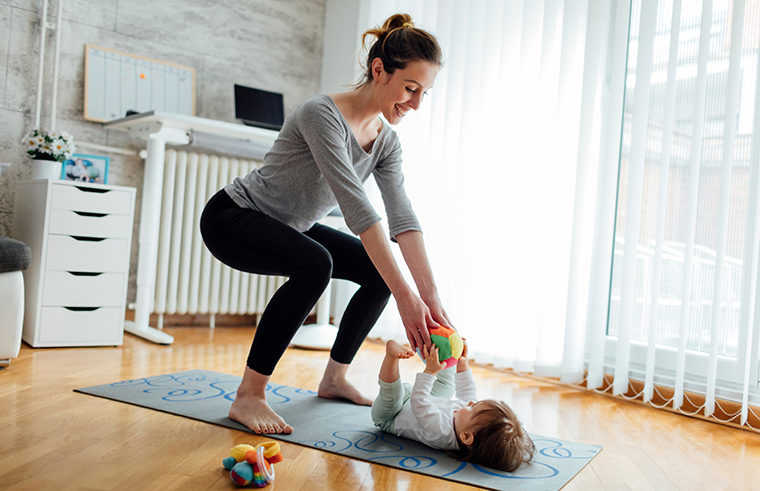How NOT to pee yourself after you’ve had a baby

If you’re pregnant, you’ve probably heard about the pelvic floor – those oh-so important muscles that hold and protect your uterus, bladder and bowel – as well as why it’s so crucial to keep this area in shape. You’ve probably also been advised to practice your pelvic floor exercises often, and while they might be boring, there are very good reasons to keep doing them.
The reason why they make such a big deal about the pelvic floor is because damage to this area can result in some unpleasant effects for you, such as bladder leakage and lack of control over passing wind.
Understandably, lots of pregnant women worry about this because of the strain that pregnancy puts on the pelvic floor region. As your uterus grows, your pelvic floor can become weak and stretched as it adjusts to your changing size. You may already have experienced slight bladder leakage, known as stress incontinence, when you sneeze or laugh, which is why you are encouraged to do your exercises as regularly as possible.
Doing these throughout pregnancy and soon after birth will help you keep your pelvic area strong and supported so you won’t experience any lasting damage.

Pelvic floor and childbirth
There is a lot of conflicting information around that suggests how you birth has an impact on the condition of your pelvic floor in the future, with many pregnant women wondering whether they’re better off to opt for an elective c-section in a bid to protect themselves from involuntary leakage after birth. However, a lot of advice in this area is misleading.
Pelvic floor and caesareans
Before you consider a c-section, in order to prevent future stress incontinence, think about how your pelvic floor is coping with your pregnancy. This is a better indicator as to whether you’ll have issues in this area later. In other words, if your pelvic floor is already struggling during your pregnancy, there’s a good chance it will continue to be weak after your birth, regardless of the type of birth you have. There are no guarantees that a c-section will save you from leaking pee in the future, plus there are potential risk factors of having a c-section in the first place, which need to be weighed up too.
Pelvic floor and vaginal births
Many women are led to believe vaginal births are linked with pelvic floor damage, but in fact it’s the specific practices during the birth that can put you at risk of damaging your pelvic floor, such as the use of forceps and constant foetal monitoring, which requires you to lie down, adding extra strain to the pelvic floor region. Being informed about birth options before the big day can put you in good position for avoiding pelvic floor damage during labour and birth. Using a doula or having a supportive birth partner to help guide you through birth and advocate for you along the way is linked with more positive birth outcomes, including shorter labour and less interventions during the birth, which can help protect your pelvic floor and prevent ongoing incontinence.
Prevention is better than cure
The best thing you can do in the lead up to the birth of your baby is to practice your pelvic floor exercises each and every day, which will strengthen and support these important muscles and reduce the likelihood of ongoing problems. It’s also important to practice good bladder and bowel habits throughout your pregnancy, which can further support your pelvic floor. This can include ensuring you drink plenty of liquids and only going to the toilet for a wee when you really need to – try not to go ‘just in case’. Eating a high-fibre diet and avoiding constipation and excessive pushing can also help protect your pelvic floor area when it comes to your bowel. For further support, you can enlist the help of a physio who specialises in the pelvic floor, who can help make sure you’re doing the exercises right and can also support your recovery after birth.









